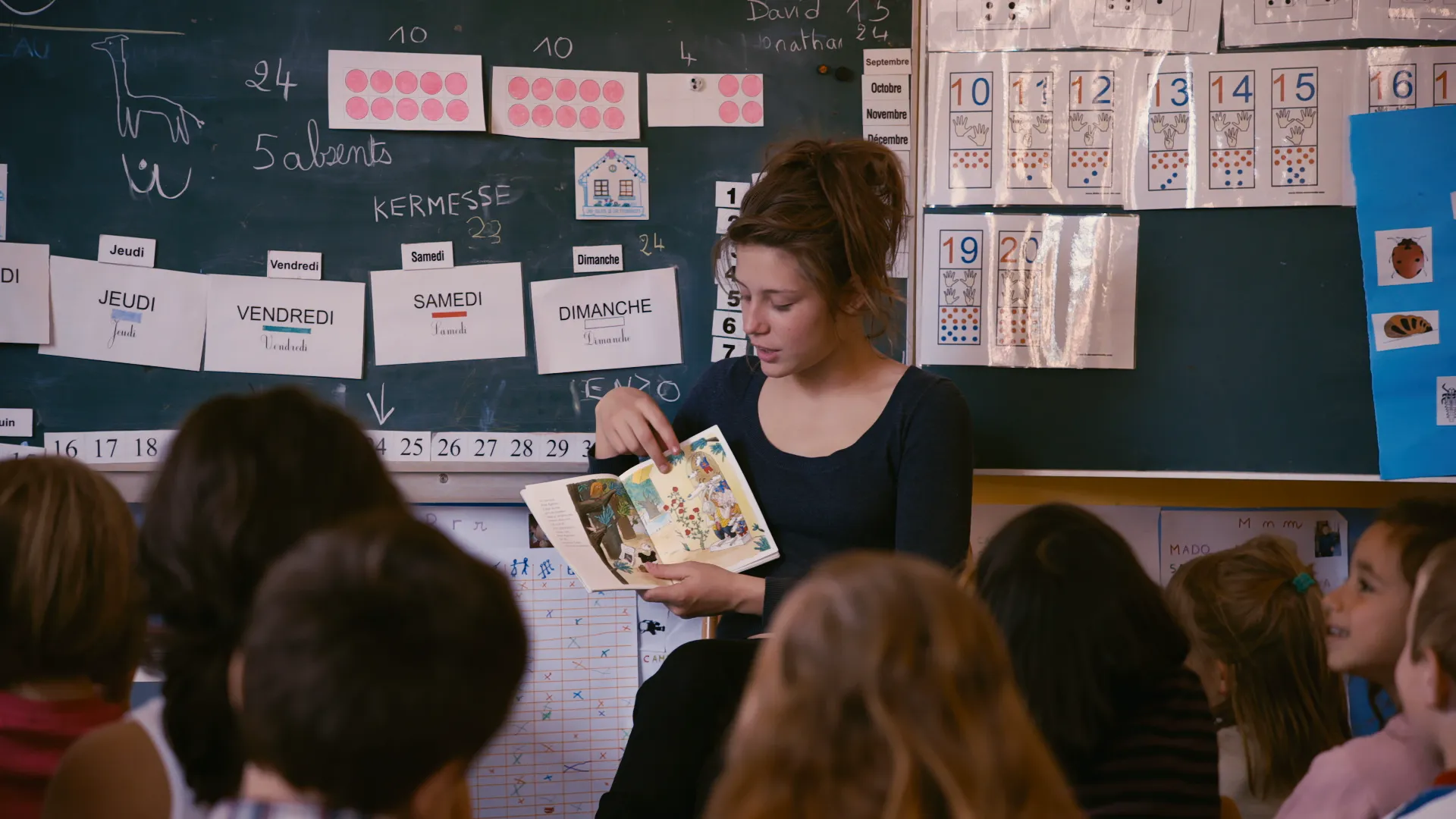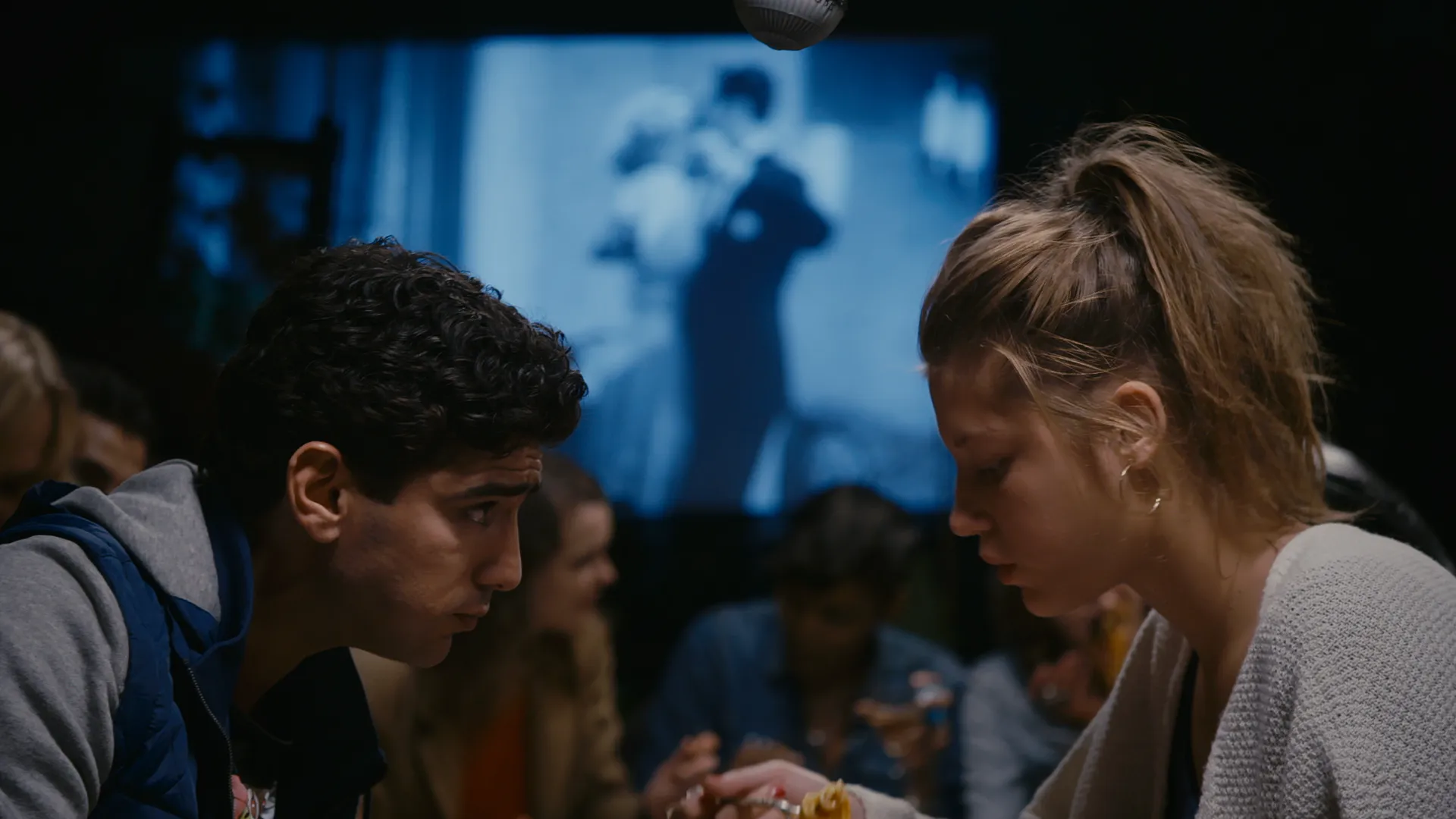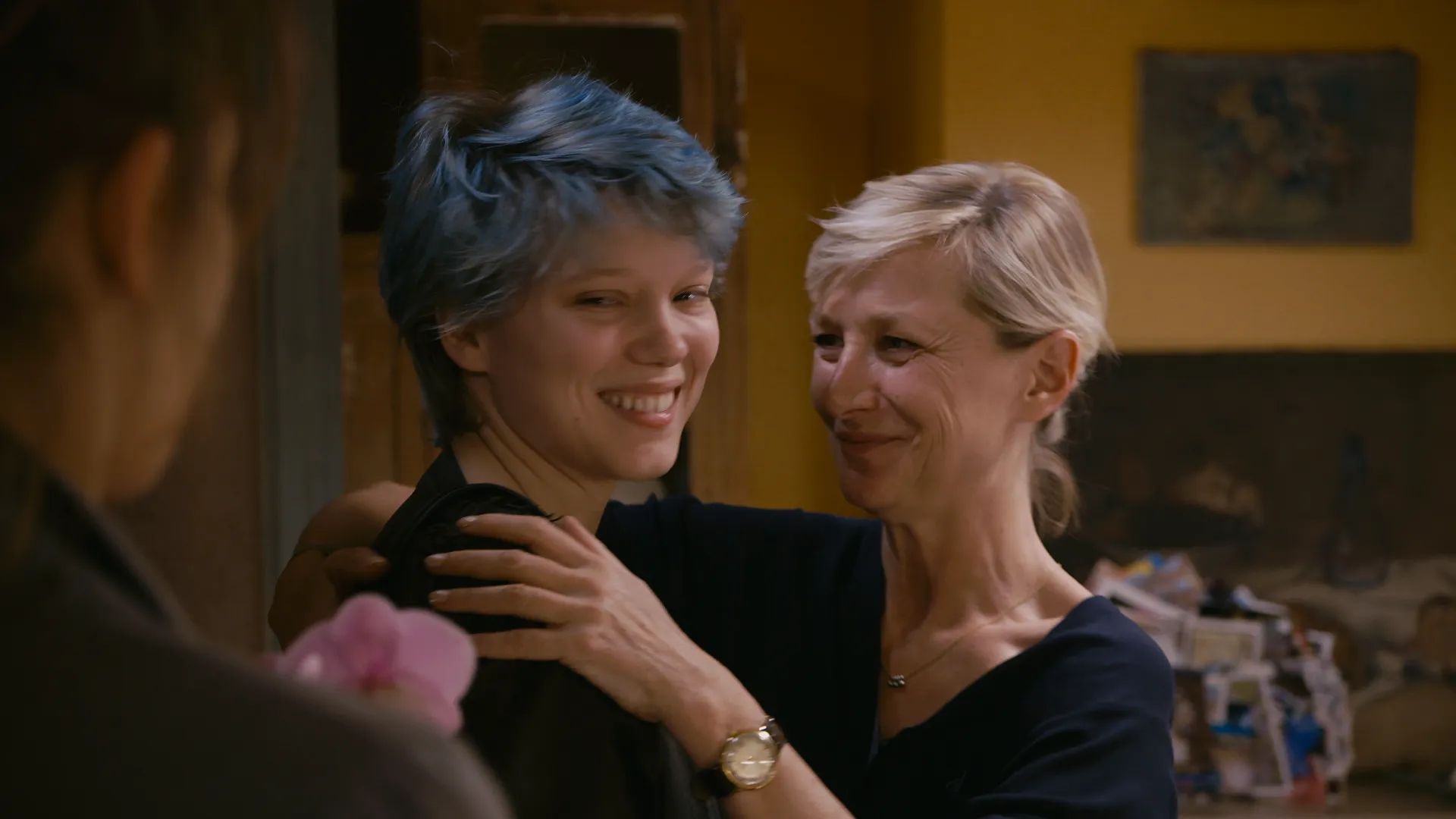Blue is the Warmest Color: A Critical Look
Adèle (Adèle Exarchopoulos), a high school student, embarks on a romance with an attractive young man but finds herself unfulfilled. Conversely, a chance kiss with a girl ignites something within her. When Adèle accompanies her gay friend to an “unconventional club,” she encounters Emma (Léa Seydoux), a blue-haired art student from the Institute of Fine Arts. The two women fall in love at first sight and soon begin a passionate relationship, eventually moving in together. However, Adèle feels out of place among Emma’s bohemian friends, and Emma struggles to understand why her lover works as a handwriting teacher instead of pursuing her literary aspirations.

Julie Maroh began drawing the comic “Blue is the Warmest Color” in 2004, at the age of 19. She spent five years creating the 160-page work.
A Divisive Masterpiece?
The enthusiastic Western reception of “Blue is the Warmest Color” and the awarding of the Palme d’Or at the Cannes Film Festival can be interpreted in two ways. One might see it as a new masterpiece of world cinema and a flawless production on a relevant topic. Alternatively, one could argue that the Western intelligentsia has succumbed to the gay lobby and blown a simple melodrama out of proportion, one that would have gone unnoticed if Emma were named Philippe. The truth, as usual, lies somewhere in between. “Blue is the Warmest Color” is not a simple melodrama, but it is not a masterpiece either. Primarily, because “Blue” suffers from a severe case of “Solaris syndrome.”

After the film received the top prize at Cannes, Léa Seydoux and Abdellatif Kechiche publicly quarreled. The actress stated that she felt like a prostitute when filming the film’s sex scenes, and Kechiche responded that world-famous stars have no right to complain about what they agree to do on set.
The “Solaris Syndrome”
What is this syndrome? It’s when a writer creates a book about one thing, and the filmmaker makes a movie about something completely different, sometimes the opposite. In the case of “Blue is the Warmest Color,” the snag was that director Abdellatif Kechiche and artist Julie Maroh, who drew the comic (well, “graphic novel”) “Blue is the Warmest Color” on which the film is based, have different views of European society. Maroh, a “white” lesbian, believes that homophobia is strong in Western Europe, while Kechiche, a French Arab heterosexual, believes that homophobia has been virtually defeated, but class contradictions are still very much alive! Accordingly, Maroh created a comic about how a female romance is destroyed under the pressure of homophobia, while Kechiche threw out half of the plot twists of the narrative (for example, the key scene in which the father rejects the heroine and kicks her out of the house) and noticeably weakened the homophobic scenes preserved in the film. Then the director filled the resulting voids with numerous dinners, demonstrating the social inequality between Adèle, who eats shawarma and pasta, and Emma, who devours oysters and wine. There are also conversations about art (“Do you know Egon Schiele? You don’t? You’re resting!”), about professions (“A school teacher? And I’m an artist!”) and other sometimes unobvious ways in which the modern elite separates itself from the plebeians.

If “Blue is the Warmest Color” had been created from the outset to demonstrate class barriers, Kechiche could have created a flawless film. But he twisted the narrative into a completely different topic, and “Blue” is like a brick house that was somehow repaired with panels after being hit by a bomb. Clearly protracted, barely dramatic (until the culminating scenes, in which the film wakes up and “ignites”) cinema with sagging storylines and suddenly appearing and disappearing minor characters… “Blue” conveys the ideas embedded in it by the director, but does it so clumsily that you want to cry.
The Heart of the Film
Why “cry” and not “indifferently wave your hand”? Because “Blue” has an excellent core – the romance of Adèle and Emma. When the girls are together (on a bench, in bed, in a restaurant – anywhere), the film becomes a powerful, passionate and frank portrait of an emerging, blossoming and dying feeling. The film’s lengthy and almost pornographic sex scenes have caused a lot of noise, but they are absolutely appropriate, although, admittedly, uncomfortable for viewers with a Y-chromosome. Such love would be incomplete without such sex. If “Blue” consisted of only scenes of the most convincing duet of Exarchopoulos and Seydou, we would have no complaints about it. But there are just over an hour of such episodes in the film. And everything else is dinners, buffets, arguments about Schiele and Klimt, school scenes of Adèle-schoolgirl and Adèle-teacher, a demonstration against the “bourgeois” that is not tied to anything… In a word, slag. Almost two hours of slag.